Suppose for a minute that you are a globally focused investment manager based in London or New York. If you have been paying attention to the signs, it is probably very hard for you not to get excited about Pakistan right now.
You get up in the morning and read an article in The Wall Street Journal touting declining poverty and the rise of Pakistan’s middle class. You switch to Barron’s and there is another piece raving about the stellar performance of the Pakistan Stock Exchange. Opinion writers in Bloomberg are talking about Pakistan as a “pleasant surprise”. Forbes is favourably comparing Pakistan to India, which may cause some discomfort to you, since you probably have far more investments in India than Pakistan, if you have any in Pakistan at all.
So you are intrigued but of course, you decide to do a little more research. After all, financial journalists are always looking for the next shiny object to draw the attention of their readers. You need to do your own diligence. That is why you make so much more money than they do.
You log on to your Bloomberg terminal and the very first thing you check for is where the country’s sovereign credit rating is at the moment. You see that both Standard & Poor’s and Fitch have rated the government of Pakistan’s international bonds at B with a stable outlook. Moody’s is one notch lower at B3, but also with a stable outlook. That is not great, but you have invested in worse and done just fine. So you look up the sovereign bond. The 10-year bond is trading at somewhat less than the issuing interest rate of 8.25%, but still much higher than what other bonds with similar maturities and credit ratings trade at. Could this be an undervalued market?
Now you’re really interested, and without realizing it, your whole morning is going to be about Pakistan today. A look at the GDP numbers tells you that the country has been growing at more than 4% for the three years that the administration of Prime Minister Nawaz Sharif has been in office. This is not, surprising, of course. All oil-importing countries have seen a boost to economic activity coming from cheaper fuel prices. That is why you are also not surprised to see inflation in mid-single digits.
But is it just all low oil prices, or is there more to the story? You check what the World Bank and the International Monetary Fund have been saying. The IMF, in particular, is seen as the “Good Housekeeping” seal of approval, since it employs some of the best macro-economists in the world and tends to monitor economies quite closely.
 You notice that IMF Managing Director Christine Lagarde was in Pakistan recently and she had some very interesting things to say while she was there. “Pakistan has reached what I call that moment of opportunity where it can embark on the next generation of reforms to generate higher and more inclusive growth and tap into the dynamism of emerging economies,” she said.
You notice that IMF Managing Director Christine Lagarde was in Pakistan recently and she had some very interesting things to say while she was there. “Pakistan has reached what I call that moment of opportunity where it can embark on the next generation of reforms to generate higher and more inclusive growth and tap into the dynamism of emerging economies,” she said.
The World Bank is similarly effusive. World Bank CEO Kristalina Georgieva, on a trip to the country, said: “Pakistan worked through three tough years that brought improvements in security and a more stable economy.”
It is not just these commentators and international bureaucrats, though. Businesses that actually risk their money are investing in Pakistan, including the most recent acquisition of Engro Foods by the Dutch dairy giant, FrieslandCampina.
At this juncture, we can step out of the perspective of this hypothetical investment manager and ask the question: is this all true? Is Pakistan’s economy truly taking off, or is this a momentary bit of prosperity that will all come crashing down the next time there is any kind of crisis in the world?
 No person living inside Pakistan is under any illusion that the country is doing dramatically better in almost every material way under the Nawaz Administration than under the Zardari Administration. But the memory of the crash at the end of the Musharraf era is still fresh, and so many people are asking the question: is that about to happen again? And if so, how soon? How much longer will this honeymoon last?
No person living inside Pakistan is under any illusion that the country is doing dramatically better in almost every material way under the Nawaz Administration than under the Zardari Administration. But the memory of the crash at the end of the Musharraf era is still fresh, and so many people are asking the question: is that about to happen again? And if so, how soon? How much longer will this honeymoon last?
But before delving deeper into how the economic boom might come crashing down, let us first take a step back and examine exactly what has happened over the last three and a half years and place it both in the context of both Pakistani history as well as the contemporary experience of other economies in Pakistan’s geographic and income peer group.
The growth in Pakistan’s economy has been real enough for anyone paying attention to the rising skyscrapers in Pakistan’s large cities and townhouse and shopping mall construction in its small towns.
The rise in construction is not only the perfect metaphor for an economy literally being built from the ground up, but also represents the single most visible sign of economic progress, and one that the Nawaz Administration in particular is most amenable to. On that front, here is one statistic that might place the current construction boom in some perspective: according to data from the All-Pakistan Cement Manufacturers Association (APCMA), in the 12 months ending January 2017, Pakistani cement manufacturers produced and shipped almost as much cement as during the first four years of the Musharraf Administration, long seen as a government in which Pakistan saw some of its strongest growth.
 Overall economic growth numbers are not quite as fast as those heady days yet. The Nawaz Administration is currently averaging a growth rate of just over 4.2% per year over the past three years or so, slower than the 5.1% per year that the Musharraf Administration averaged over its nine years in office, but certainly a welcome change from the 2.6% average seen during the Zardari years, the slowest economic growth rate on record for a Pakistan government.
Overall economic growth numbers are not quite as fast as those heady days yet. The Nawaz Administration is currently averaging a growth rate of just over 4.2% per year over the past three years or so, slower than the 5.1% per year that the Musharraf Administration averaged over its nine years in office, but certainly a welcome change from the 2.6% average seen during the Zardari years, the slowest economic growth rate on record for a Pakistan government.

But overall, the signs of economic activity look robust. Car sales, for instance, crossed their pre-crisis peak this past year, with the industry selling nearly 180,000 locally assembled cars, according to data from the Pakistan Automotive Manufacturers Association (PAMA). That number represents a 49% increase over the 120,332 cars assembled in Pakistan in the fiscal year ending June 30, 2013, around the time Prime Minister Nawaz Sharif took office. And unlike the last boom in car sales, a much smaller proportion of the new cars being sold today are being financed by banks. More people are buying cars in cash than the height of the pre-crisis boom.
Small wonder then than Volkswagon is finally willing to pull the trigger on its plan to invest in manufacturing facilities in Pakistan and Hyundai and Nissan are exploring joint ventures with local industrial conglomerates to set up car assembling plants in the country.
 Foreign investment on the whole is up as well. Net inflows from foreign investors over the past 12 months clocked in at $2 billion, a 48% increase over the previous year. However, this number should probably be placed in broader context: the number is still far lower than the $5.4 billion peak reach in the fiscal year ending June 30, 2008, just before the global financial crisis. And while the $2 billion number is the best foreign investment figure under the Nawaz Administration, it is not even as good as the $2.1 billion in net FDI that flowed in Pakistan in FY2010, the second year of then-President Zardari’s term in office. (Yes, really: Nawaz’s best year for FDI is worse than Zardari’s best year.)
Foreign investment on the whole is up as well. Net inflows from foreign investors over the past 12 months clocked in at $2 billion, a 48% increase over the previous year. However, this number should probably be placed in broader context: the number is still far lower than the $5.4 billion peak reach in the fiscal year ending June 30, 2008, just before the global financial crisis. And while the $2 billion number is the best foreign investment figure under the Nawaz Administration, it is not even as good as the $2.1 billion in net FDI that flowed in Pakistan in FY2010, the second year of then-President Zardari’s term in office. (Yes, really: Nawaz’s best year for FDI is worse than Zardari’s best year.)
Nonetheless, at least some of the slack in foreign investment (though by no means all) is being made up for by local savers, both individuals as well as Pakistani companies. Deposits at banks in the country clocked in at Rs10.7 trillion ($102 billion) at the end of January 2017, up 54% since the 2013 election. That growth certainly caught the attention of foreign investors, since the government was able to sell its 40% stake in Habib Bank for over $1 billion in 2014, in what was one of the largest listing transactions in the history of the Pakistan Stock Exchange.

And this is before we even mention CPEC.
Yes, CPEC, the China-Pakistan Economic Corridor, or the road that nobody in Pakistan can seem to stop talking about. By now, most people are well aware that CPEC is not a $46 billion gift from Beijing to the Pakistani economy, but rather a complicated set of infrastructure investments that will be paid for mostly by Pakistani investors, consumers, and taxpayers in the form of commercial loans from Chinese banks paid back by Pakistani power generation companies and the government, and electricity tariffs paid by ordinary Pakistani consumers. China is not losing money through CPEC, it is making money at every step of the way.
 But supporters of the government, and CPEC, argue that just because China is making money on CPEC does not mean that it is not good for the Pakistani economy, especially when one considers the fact that two-thirds of it consists of investments in Pakistan’s power generation capacity. Given the fact that the spotty supply of electricity is one of the biggest reasons for why the Pakistani economy has been held back, one could reasonably make the case that Chinese financing for all of those power plants, which will collectively have the capacity to produce 10,400 megawatts (a 40% increase over Pakistan’s current capacity), is unmistakably a good thing.
But supporters of the government, and CPEC, argue that just because China is making money on CPEC does not mean that it is not good for the Pakistani economy, especially when one considers the fact that two-thirds of it consists of investments in Pakistan’s power generation capacity. Given the fact that the spotty supply of electricity is one of the biggest reasons for why the Pakistani economy has been held back, one could reasonably make the case that Chinese financing for all of those power plants, which will collectively have the capacity to produce 10,400 megawatts (a 40% increase over Pakistan’s current capacity), is unmistakably a good thing.
There is at least some truth to this argument. More reliable electricity supply would allow smaller businesses to produce at full capacity without having to run generators at extremely high costs, which in turn would boost both employment and economic output.
Even a sceptic, then, would argue that while there are certainly some trouble spots (slowing exports and the rising current account deficit, to name two), the overall picture of the Pakistani economy looks rosy. Of course, nobody would argue that there will never be another recession in the country, but are the developments of the last three years the build-up to an economic take-off, or are they simply a nice lull before the country gets hit by the economic equivalent of a hailstorm?

Of course, Finance Minister Ishaq Dar, the man most directly charged with managing the economy, would have us believe that this miniature boom is the new state of affairs, that Pakistan is now on a permanently faster growth trajectory. “All major macroeconomic indicators are moving in the right direction,” said Dar, and that is mostly true. But it does not answer the question: for how much longer?
On that front, a group of domestic economists and economic analysts who spoke to Profit were nearly unanimous: not much longer. The next global economic crisis, they say, will knock Pakistan back into a recession.
Perhaps the bluntest was Nadeem-ul-Haq, a University of Chicago-trained economist who worked for several decades at the IMF before returning to Pakistan to serve as, among other positions, the deputy chairman of the Planning Commission under the Musharraf and Zardari administrations.

“The point is simple: we haven’t made any reforms yet, irrespective of what the government says,” he said. “The cost of doing business is high and several other factors are included in problems and we haven’t done anything to tackle them. Some external factors, like low oil prices, are responsible for the improvements being seen in the economy but when they recover, one little shock to our economy and we’ll go back to borrowing. The IMF is the emergency ward of the world and we will stay in the Fund award as we always have.”
That last point is particularly interesting because the IMF resident representative in Islamabad, Tokhir Mirzoev, told Profit: “If Pakistan manages to capitalize on its economic improvements, it may not need to come back to the IMF for assistance again.”
Domestic economists, however, find the notion that Pakistan can somehow avoid returning to an IMF bailout program, laughable. For them, it is not a question of if but when Pakistan returns to the IMF seeking a bailout.

“A lot of when we will go back to IMF depends on oil prices,” said Sakib Sherani, an economic analyst and founder of Macro Economic Insights, an Islamabad-based economics research firm. “Prices have already started to go up again in the last few months. Because of IMF loan repayments, Pakistan’s foreign exchange reserves are also going down, so it won’t be more than late 2018 or early 2019 that we will go back to the IMF.”
Some went so far as to say that the IMF is well aware that Islamabad will be back seeking a loan from them in the next few years. “The IMF knows that we will be going back to them,” said Salman Shah, an Indiana University-trained economist who served as acting Finance Minister from 2007 to 2008. “Even in the last meeting with the IMF, the Fund stressed that we make reforms in the economy and businesses, which we aren’t doing. It’s not the objective of the government that we won’t have to go back to IMF. Their objective is to win the elections.”
Another distinguished economist, Kaiser Bengali said “International agencies only praise the government if it opens the doors for them, it is only their vested interests in the economy that makes them praise the country’s state of economy. As of now Pakistan is selling bonds at 8% rate while Sri Lanka is selling at 5.5%. This shows how much progress we have actually achieved.”

Nearly all economists and economic analysts who spoke to Profit brought up the 2018 elections as an inflection point, which may cause the economic tide to turn. Perhaps the reason for this is that the elections were one of the catalysts for the last economic crisis in the country, when Pakistan was caught in the perfect storm of rapidly rising oil prices coinciding with a populist government campaigning for re-election.
In 2007, just as oil prices were beginning to hit their peak, the government at the time, in a bid to appease voters, decided that, instead of passing on that price increase to consumers, would absorb the shock on their behalf and dramatically increase fuel and electricity subsidies. That, in turn, caused the country’s financial situation to deteriorate sharply, increasing the deficit, slashing foreign exchange reserves, and forcing the government to seek a bailout from the IMF.

And if one wants to dig even deeper, the reason the government had to seek a bailout from the IMF is because the government of Pakistan spends far more than it takes in through tax revenues, largely because of a decision made as far back as 1947 to not tax the wealthy elite of the country. Instead, the government enforces taxes based on what it has the ability to collect without much effort – likes sales taxes, or transaction taxes on highly documented sectors – but not what it should be taxing, such as the incomes of the country’s increasingly large moneyed elite.
On this front, there is unanimous consensus amongst skeptical domestic economists and optimistic global economists alike: the government of Pakistan has done absolutely nothing to substantively solve its tax collection problem and is not even pretending to try.
Economists are right to expect that something similar is likely to happen again, in large part because most economic crises in developing countries occur due to balance of payments crises. Pakistan, for instance, does not have a large enough mortgage or consumer financing sector for a housing or consumer lending crisis to bring the economy crashing down, like it did in the US in 2008.

But the more astute among economists are careful not to link the run-up to the 2018 election as the direct cause of the next economic crisis. Just because the last recession happened because the government made bad decisions in the run up to an election does not mean the next one will too. And indeed, on this score, there is some room for optimism: when oil prices started declining under his administration, Prime Minister Sharif took at least partial advantage of that decline by reducing electricity and fuel subsidies, rendering the country at least slightly less vulnerable to an oil price shock.
No, the next economic crisis in Pakistan will be more similar to the Asian financial crisis of 1997, and it will happen purely because of a decision taken by Finance Minister Ishaq Dar.
In 1997, many of the Asian Tiger economies had been growing rapidly for the last several decades, and their domestic companies were increasingly being courted by global banks keen to lend them money to finance their continued expansion. Many of the loans were denominated in US dollars or other foreign currencies.
 Loans are great when you are actually borrowing the money because they add to the country’s foreign exchange reserves in addition to providing financing for investments into future economic growth. The problem arises when you have to start paying the loans back. Simply put, you have to buy dollars and sell local currency in order to pay back the loan. But if enough loans are maturing at a similar time, there are more people buying dollars than there are people selling dollars, causing the price of the dollar to rise and the local currency to drop.
Loans are great when you are actually borrowing the money because they add to the country’s foreign exchange reserves in addition to providing financing for investments into future economic growth. The problem arises when you have to start paying the loans back. Simply put, you have to buy dollars and sell local currency in order to pay back the loan. But if enough loans are maturing at a similar time, there are more people buying dollars than there are people selling dollars, causing the price of the dollar to rise and the local currency to drop.
That, in turn, makes the loans harder to pay off, because the more the currency depreciates, the higher the amount in local currency that needs to be used up in order to pay back the loan. The problem is particularly exacerbated in countries that run a current account deficit, because there will always be more people selling the local currency than buying it, causing it to continuously weaken. As you may have guessed, Pakistan falls into that category of countries.
So the trigger for the next crisis will not be oil prices (though that is a possibility). The trigger will be when all of the loans Pakistani energy companies have borrowed from China come due. In some ways, that makes the crisis more predictable because that means that it will happen based not on a mercurial oil market, but rather based on the contracts that govern the loan contracts for CPEC projects.

“The power plant payments, tariff payments, capacity payments and loan repayments would exert a lot of pressure and our economy or exports are not in a position to bear that strain. So we will have to go to IMF again,” Salman Shah said in an interview with Profit.
However, here is where Finance Minister Ishaq Dar’s actions have made matters worse: by insisting on not allowing the rupee to continue depreciating naturally, Dar has done two things that have made the economy even more vulnerable to a crisis. Firstly, he has rendered the rupee artificially strong, which means that when it falls, it will have a much sharper drop than it would otherwise have had. And secondly, in his vain desire to keep the rupee at an artificially high value, Dar has used up more foreign exchange reserves and built up even more through borrowing, meaning that Pakistan’s capacity to deal with a currency crisis will be even lower than it normally is.
Not only will Pakistan most certainly need an IMF bailout, it will need one bigger than one than Islamabad has ever asked for before.
 CPEC, in other words, is most certainly a cause of growth acceleration for the Pakistani economy. But it is also the keg of dynamite that will cause the Pakistani economy to blow up and eviscerate much of the gains CPEC was supposed to have created in the first place.
CPEC, in other words, is most certainly a cause of growth acceleration for the Pakistani economy. But it is also the keg of dynamite that will cause the Pakistani economy to blow up and eviscerate much of the gains CPEC was supposed to have created in the first place.
Will the country be better off because of CPEC in the long run? We are about to find out.



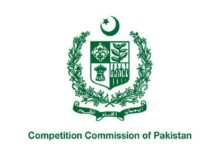
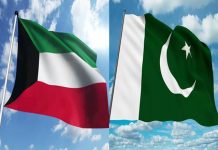















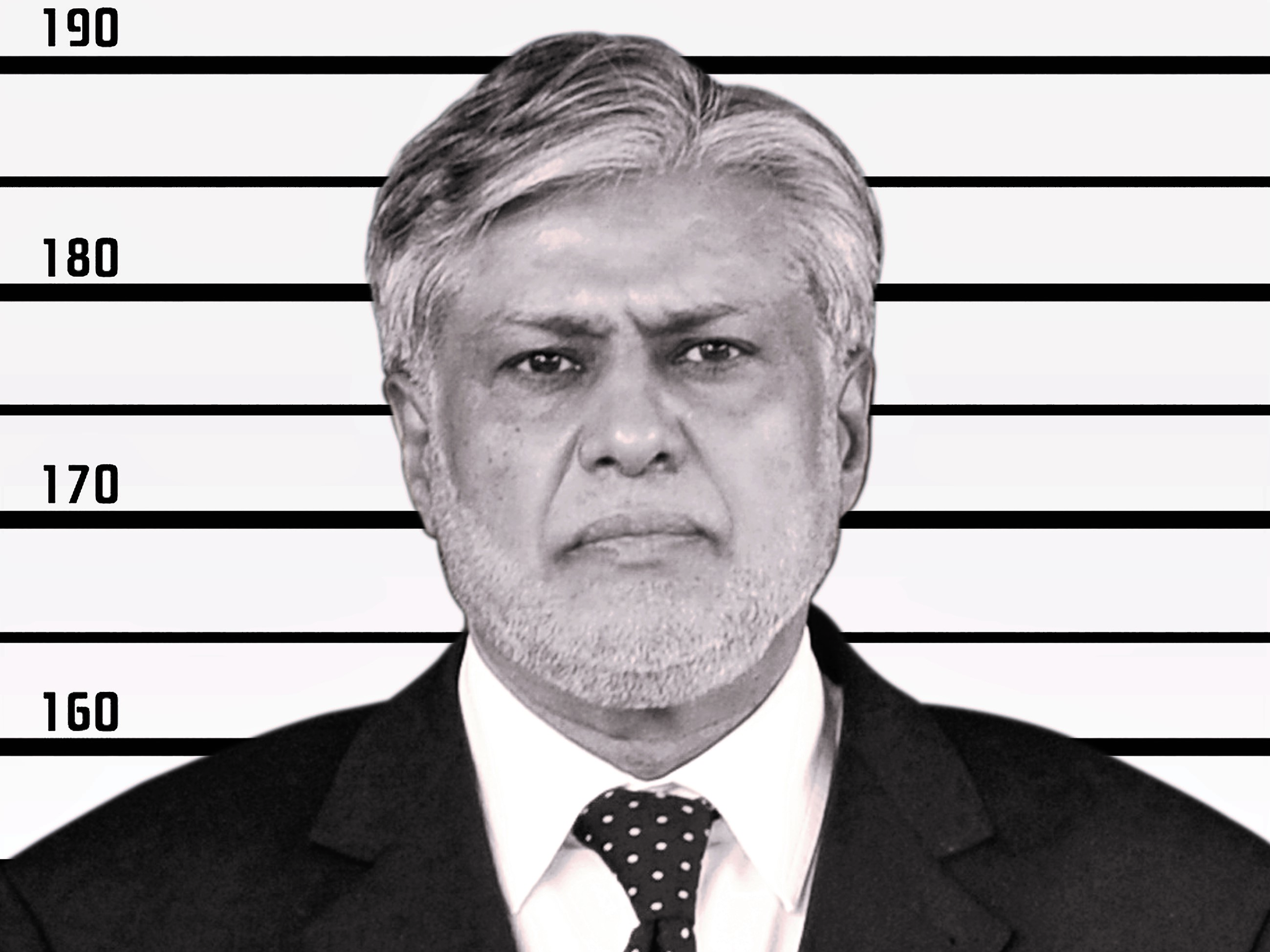

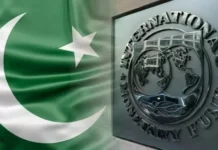
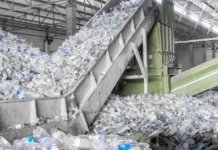
Very informative and very realistic. I wish and pray that it gets better than worst.
The articles drew a very thin line between pessimism and criticism. I must say I’m convinced. Looks like you guys just revealed all of Dars cards.
Interesting article, but as we see a real situation in Pakistan is changing really fast. Small businesses are opening and a middle class is growing. We cant compare Pakistan to India and it would be very wrong to do so because both countries are different with their area and a population, India and China might be a right to compare.
Pakistan is offering unique services as new developments are growing with right education and funds, Pakistan will grow and develop. Challenges are there for sure but we will see progress and relationship between Pakistan and India will grow as business and education will grow. For sure Pakistan is on a right track (slow but getting there).
Property Tax policy impact is missing which can make a diffrence if they keep it for another year or more. Oil prices & Elections, these two things can give Pakistan a nightmare.
The difference between musharaf and this era is that now we are investing on electricity which is necessary for growth …
I think this guy has totally forgotten that CPEC will also bring in a lot of foreign revenue that will help us stabilize our foreign debts… He talking as if CPEC is a static infrastructural project….. Please stop being pessimist ..
Possible conclusions:
Government will resort to ADB or World Bank or IMF, AIIB for rescue efforts in order to refinance the financing part of the CPEC Loan.
Higher Taxes through GST and Salary Base Income Taxes. Reduction in Taxes and increase in momentum to privatize PIA and Steel Mill
Early Elections becomes a priority for PML-N to secure the next term before after effects of CPEC start translating in common man lives.
Superb piece of analysis. Hats Off!!
Excellent article.
Hope for the best.the situation is far better than before.
All i get from this article is loan from imf is the wayout. And also cpec is a disaster.
Three hikes from Janet Yellen and comparatively higher oil prices outlook in the second half of this year can burst the bubble of a loan based economy of Ihsaq Dar. Infrastructure development is not the only measure to scale up the economy. With record lower exports, remittances and agriculture sector in the doldrums i fail to understand the idea of booming economy. It maybe flourishing for few cartels but not for the entire country.
Economies only thrives on long term, robust and sustainable polices. PML N Gov missed the ideal opportunity for the real economic reforms when the oil prices were at record low. World is moving from fossil fuels to renewables whereas the GOV of Nawaz Sharief has not able to form a single policy on cheap and pro-environmental resources i.e solar, wind and tidal.
Comments are closed.